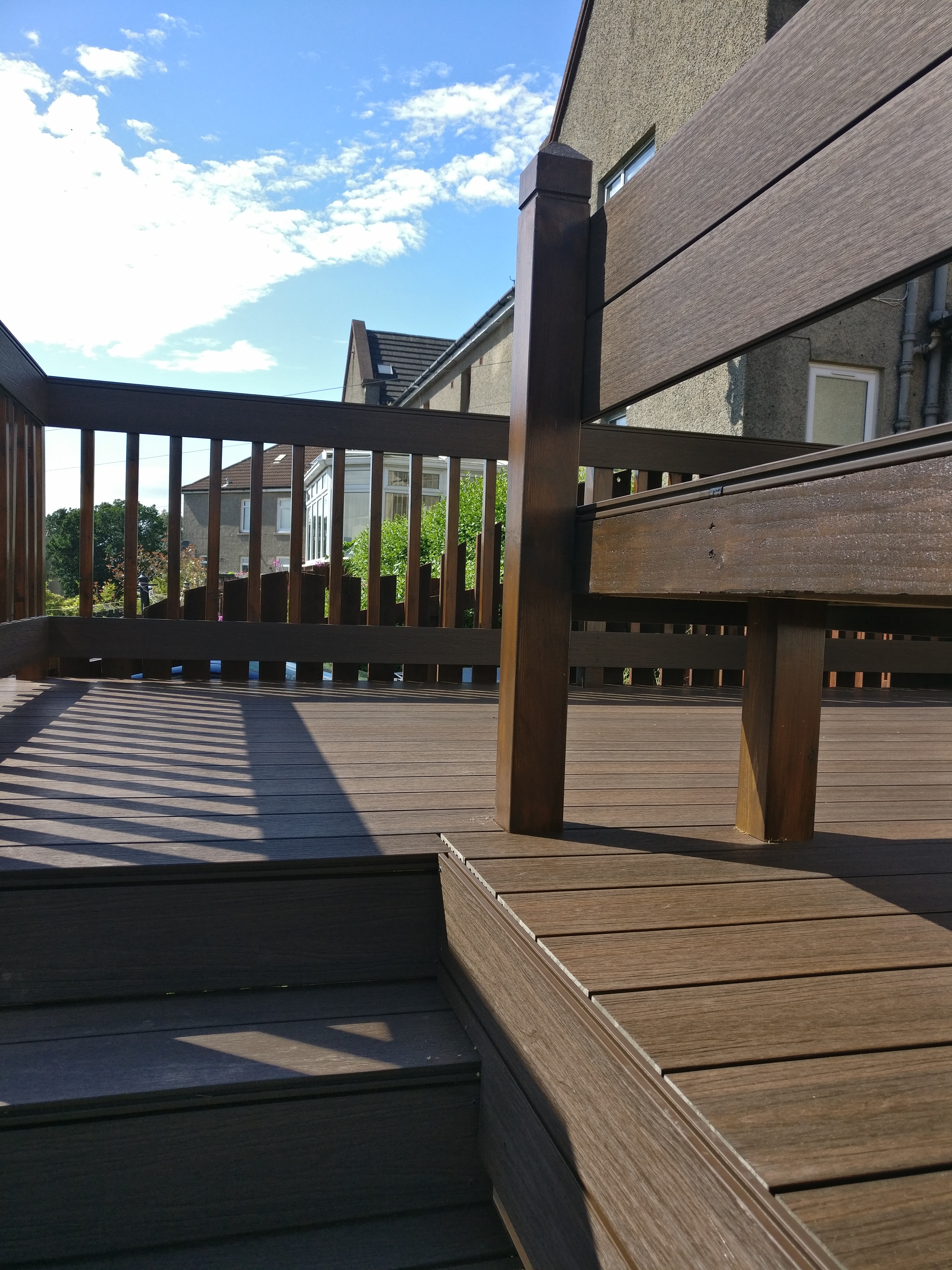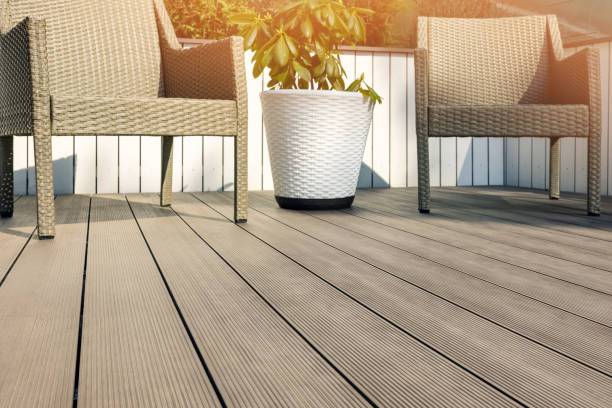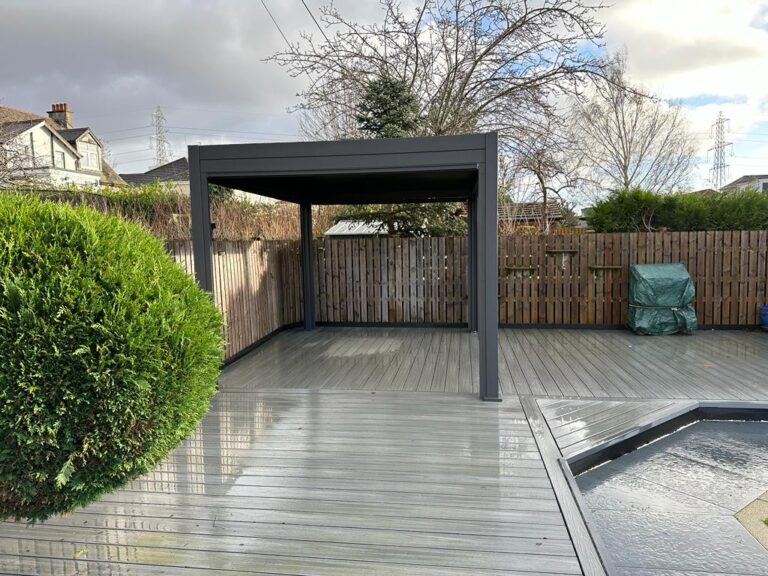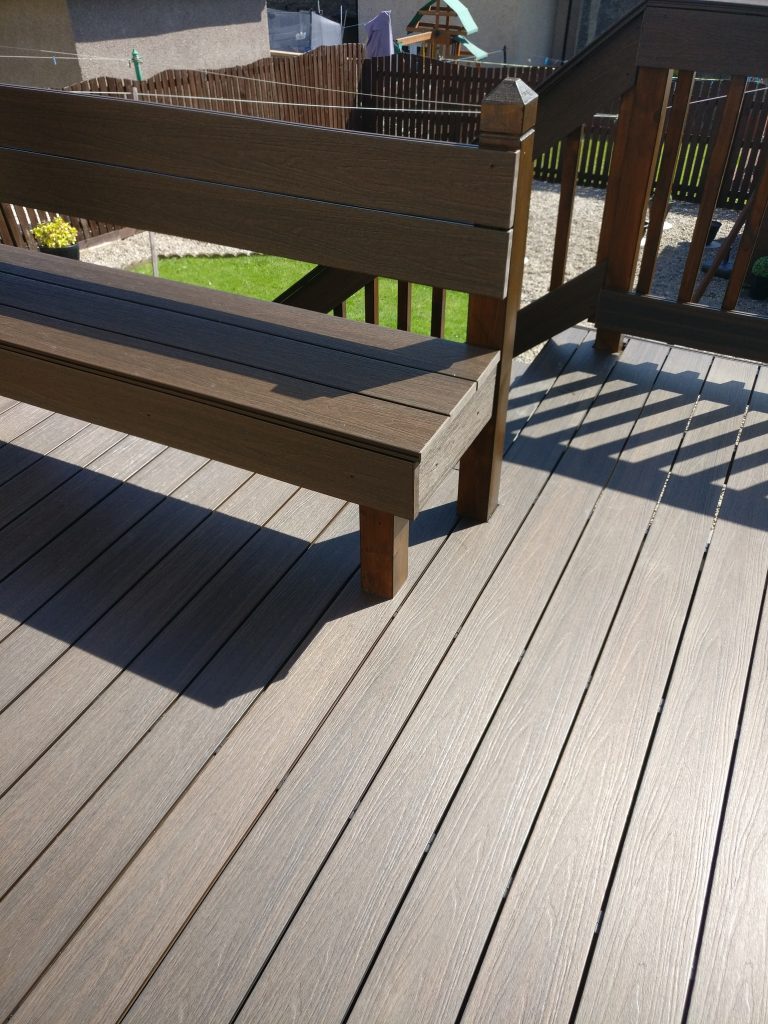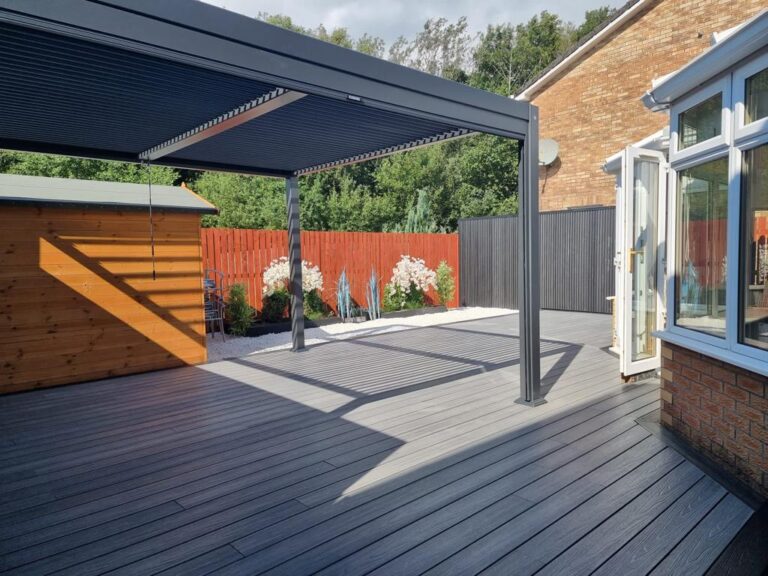Composite decking has become a popular choice for outdoor living spaces due to its numerous benefits. From low maintenance to eco-friendliness, composite decking offers a range of advantages over traditional wood decking. But before you dive into the world of composite decking, there are a few important considerations to keep in mind.
In this comprehensive guide, we’ll explore the concept of composite decking, its benefits, factors to consider before installation, and the important question of what to put under composite decking. Whether you’re a homeowner planning a new deck or a contractor looking for valuable insights, this article will equip you with the knowledge you need to make informed decisions and create a stunning outdoor space.
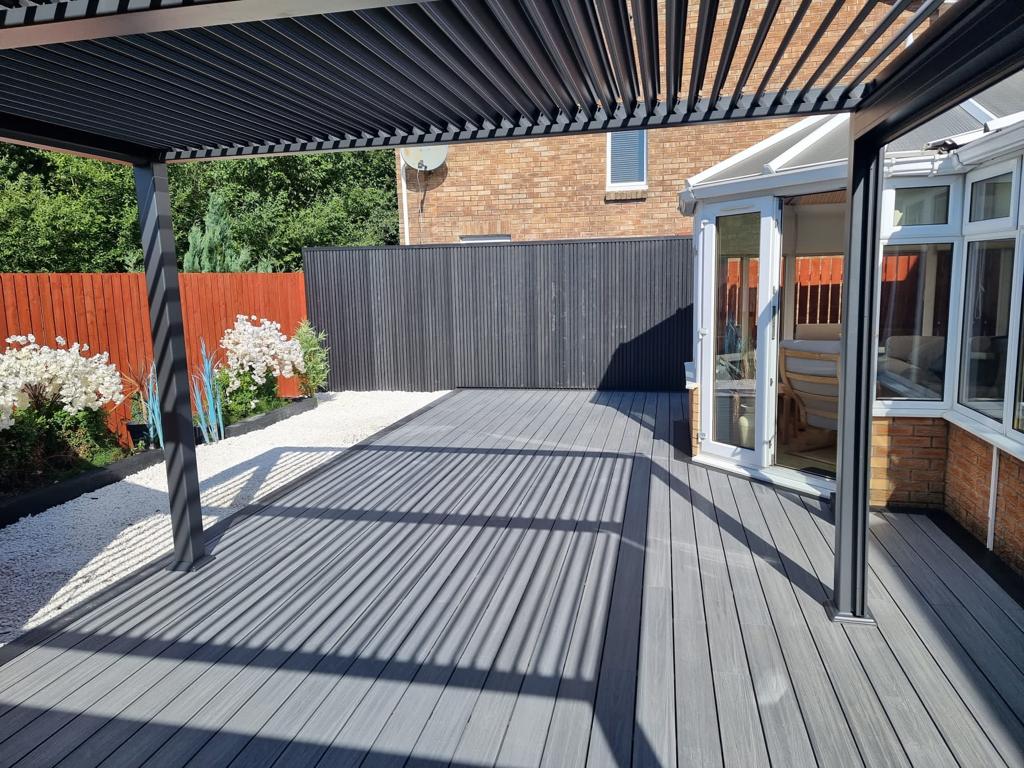
What is Composite Decking?
Composite decking is a modern alternative to traditional timber decking, composed of a mixture of materials such as timber fibres and recycled plastic, offering a durable and low-maintenance outdoor flooring solution.
It is renowned for its resistance to fading, staining, and rotting, making it ideal for withstanding various weather conditions without losing its aesthetic appeal. Due to its composite composition, it requires minimal maintenance, eliminating the need for regular staining, sealing, or painting.
The installation process involves using specialised fasteners or hidden clips to ensure a smooth, uniform surface, and the result is a sleek, modern outdoor space. Composite decking contributes to sustainable practices by utilising recycled materials, making it an eco-friendly choice for outdoor living areas.
What are the advantages of using composite decking?
Composite decking presents several advantages, including:
- Low maintenance requirements
- Exceptional durability
- A diverse range of colours and textures
- Eco-friendly attributes
Making it a sought-after choice for outdoor living spaces.
Low Maintenance
One of the primary benefits of composite decking is its low maintenance requirements, reducing the need for regular upkeep whilst effectively preventing damage and extending its lifespan.
This makes it an ideal choice for those looking for a durable, long-lasting outdoor flooring solution. Unlike traditional wood decking, composite decking doesn’t require staining, sealing, or painting, saving homeowners time and money in the long run. Its resistance to rot, mould, and pests ensures that it maintains its appearance and structural integrity, even in harsh weather conditions. With minimal maintenance, composite decking continues to look pristine, providing a beautiful and functional outdoor space for years to come.
Durability
Composite decking offers exceptional durability, effectively resisting moisture, mould, mildew, and rot, ensuring long-term stability and structural integrity in outdoor environments.
Its unique composition, often a blend of recycled wood fibres and high-quality polymers, provides unparalleled protection against the damaging effects of moisture, ensuring that the decking material does not warp, crack, or splinter over time. The absence of organic materials in the composite reduces the likelihood of mould and mildew growth, further enhancing its resistance to environmental elements. This makes composite decking an ideal choice for areas with high humidity or frequent exposure to moisture, as it maintains its strength and appearance for years with minimal upkeep.
Variety of Colours and Textures
Composite decking provides a diverse range of colours and textures, allowing for versatile installation options that cater to individual preferences and outdoor design schemes.
These decking materials come in natural hues such as rich browns, warm reds, and deep greens, as well as more modern shades like cool greys and slate tones. The textures range from wood grain patterns to sleek, smooth finishes, providing homeowners with the opportunity to create unique and eye-catching outdoor spaces. Whether one prefers a traditional, rustic look or a contemporary, urban feel, composite decking offers a fantastic array of options to suit any style and enhance the overall aesthetic of an outdoor area.
Environmentally Friendly
Composite decking is considered eco-friendly, meeting building code requirements and promoting proper installation practices, ensuring minimal environmental impact and sustainable outdoor construction.
Its use of recycled materials and reduced maintenance needs make it an environmentally conscious choice. The proper installation of composite decking ensures structural integrity while minimising waste during construction. By adhering to building codes, this decking option enhances safety and durability, contributing to long-term sustainability. Its resistance to rot, mould, and insects adds to its eco-friendly attributes, reducing the need for harmful chemical treatments and extending its lifespan.

What are the things to consider before installing composite decking?
Before installing composite decking, several factors need consideration, including climate and weather conditions, budget constraints, and the intended location and usage of the outdoor living space.
Taking into account the local climate is crucial, as extreme variations can impact the durability and maintenance of composite decking. Aligning the installation with budget considerations ensures a cost-effective approach without compromising on quality.
Understanding the intended usage, such as heavy foot traffic or exposure to elements, helps in selecting the most suitable composite decking material for longevity and performance.
Climate and Weather
The climate and weather patterns in the installation area play a crucial role in determining the moisture levels and overall stability of the composite decking, necessitating careful assessment and planning.
These factors influence the performance and longevity of the decking material. In areas with high humidity or frequent rainfall, moisture absorption can impact the structural integrity of the composite boards. Extreme temperature fluctuations can also cause expansion and contraction, leading to warping or cracking. Therefore, it’s essential to select composite decking materials that are specifically engineered to resist moisture and temperature variations, ensuring long-term durability and performance.
Budget
Establishing a well-defined budget for composite decking projects is essential, covering the costs of materials, installation, and any additional requirements in line with recommended guidelines.
It is crucial to carefully consider the material costs for composite decking, as these can vary significantly based on the quality and type of composite materials chosen. Adhering to installation guidelines is equally important to ensure the longevity and durability of the deck. By meticulously planning and adhering to budgetary constraints, homeowners can effectively manage the project costs and avoid any unexpected financial burdens.
Proper budget planning allows for the inclusion of any special requirements or design features, helping to create a stunning and functional outdoor living space within the set financial parameters.
Location and Usage
Selecting the appropriate location and intended usage for composite decking involves evaluating the need for structural support, maintenance considerations, and the overall functionality of the outdoor living space.
Considering the structural support, it is essential to determine if the chosen area can bear the weight of the decking material and furniture, especially for elevated or rooftop decks. Maintenance requirements should be factored in, as composite decking may need occasional cleaning to maintain its appearance.
The desired functionality of the outdoor space, whether for hosting gatherings or creating a tranquil retreat, influences the layout and design choices for the composite decking.
What Can You Put Under Composite Decking?
Various materials and systems can be used under composite decking, including gravel, landscape fabric, drainage solutions, and structural support elements, addressing moisture management and stability concerns.
These components play crucial roles in maintaining the structural integrity of composite decking. Gravel aids in drainage, preventing water build-up that could compromise the decking’s stability. Landscape fabric acts as a barrier, reducing weed growth and protecting against soil erosion.
Drainage solutions, such as troughs or channels, efficiently manage water flow, while structural support elements, like joists or pedestals, ensure even weight distribution. By incorporating these materials and systems, moisture-related issues are minimised, and the decking’s longevity and performance are enhanced.
Gravel or Crushed Stone
Using gravel or crushed stone under composite decking facilitates effective water drainage and contributes to the stability of the outdoor flooring system, enhancing its long-term performance.
These materials create a porous and solid foundation, allowing excess water to flow away from the decking area, preventing issues like standing water and potential moisture damage. The gravel or crushed stone serves as a barrier that helps deter weed growth, minimising maintenance tasks. By promoting proper drainage and providing a sturdy base, they play a crucial role in preserving the integrity and aesthetic appeal of the composite decking, making them a valuable addition to outdoor living spaces.
Landscape Fabric
Landscape fabric serves as a protective barrier and underlay under composite decking, effectively preventing weed growth and providing additional support for the outdoor flooring system.
It acts as a crucial weed deterrent, creating a physical barrier that blocks sunlight and nutrients from reaching the soil, thus inhibiting weed germination and growth. The fabric’s ability to promote proper drainage and prevent soil erosion adds to its significance in maintaining the structural integrity of the composite decking. Its installation beneath the decking also aids in reducing weed control efforts and enhances the overall durability and longevity of the outdoor space.
Concrete Pavers
Concrete pavers can be utilised under composite decking to create a stable ground surface, facilitating proper levelling and secure fastening of the decking boards, ensuring a robust and level outdoor structure.
They serve as an effective solution for addressing uneven or sloping ground, preventing sagging or warping of the composite decking due to ground instability. Concrete pavers provide exceptional support for heavy loads, enhancing the durability and longevity of the decking, whilst also promoting efficient water drainage and minimising the risk of rot or decay. This integration enhances the overall performance and resilience of the outdoor decking, offering a reliable and visually appealing outdoor living space.
Patio Blocks
Paving blocks are an effective choice for placement under composite decking, providing proper spacing, ventilation, and secure attachment points for the decking boards, ensuring optimal performance and durability.
This method of installation enhances the longevity and structural integrity of the composite decking by preventing moisture build-up and promoting air circulation. The paving blocks serve as a buffer between the decking and the ground, reducing the risk of water damage and decay.
By ensuring a stable and well-ventilated foundation, paving blocks play a vital role in maintaining the structural integrity of the composite decking, making them an essential component of the overall installation process.
Sand
The use of sand under composite decking aids in drainage, mitigates moisture concerns, and contributes to the overall stability and structural integrity of the outdoor flooring system.
This natural material provides a reliable method for managing water runoff, preventing pooling, and reducing the risk of water-related damage to the decking structure. It creates a uniform and stable base, distributing weight evenly and minimising the potential for sagging or warping.
Sand helps to level the ground, making it an ideal choice for uneven or sloped surfaces, ensuring a smooth and professional finish for the composite decking installation.
Drainage Systems
Implementing drainage systems under composite decking is crucial for efficient water drainage, preserving the ground integrity, and minimising maintenance requirements, ensuring long-term performance.
By allowing water to efficiently drain away from the decking surface, these drainage systems play a vital role in preventing water damage and rot, which can compromise the structural integrity of the composite decking and even affect the substructure. By preserving the ground beneath the decking, they help maintain a stable and level surface, reducing the potential for soil erosion. This not only enhances the aesthetic appeal of the outdoor space but also minimises the need for extensive maintenance, resulting in cost savings and prolonged lifespan of the composite decking.
Under-Deck Ceilings
Under-deck ceilings offer enhanced ventilation and airflow management under composite decking, effectively preventing moisture build-up and potential damage to the underlying structure.
This is particularly significant as proper ventilation helps in reducing the risk of mould and mildew, which can compromise the structural integrity of the deck. By promoting airflow, under-deck ceilings also aid in maintaining a comfortable outdoor environment, allowing for enjoyable leisure activities without the hindrance of excessive heat or humidity.
This comprehensive approach to managing airflow contributes to the longevity of the decking materials and the overall structure, making under-deck ceilings an invaluable addition to any composite decking setup.
What are the advantages of placing something under composite decking?
Placing materials or systems under composite decking yields several advantages, including:
- The prevention of weed growth
- Protection against moisture-related issues
- Improved structural support
- Enhanced drainage
For instance, by placing a weed barrier fabric beneath the composite decking, it acts as a shield preventing weed growth, reducing the need for constant maintenance. The materials also serve as a protective layer, guarding against moisture build-up, which can lead to decay and mould.
Incorporating proper support systems underneath the decking ensures longevity and stability. The integration of materials for improved drainage promotes efficient water runoff, preventing potential damage to the decking structure.
Prevents Weeds and Plant Growth
The placing of materials under composite decking effectively prevents weeds and plant growth, reducing the need for ongoing maintenance and preserving the aesthetics of the outdoor living space.
This method not only enhances the longevity of the decking but also reduces the likelihood of weed and plant disturbances that can negatively impact the visual appeal. The use of materials under composite decking acts as a barrier, preventing unwanted intrusion and minimising the maintenance efforts required to keep the area tidy. By integrating these materials, homeowners can enjoy a cleaner and more visually pleasing outdoor environment, contributing to a more functional and aesthetically pleasing outdoor living space.
Protects the Decking from Moisture and Rot
Materials placed under composite decking act as a protective barrier, shielding the decking system from moisture accumulation, minimising the risk of rot, and facilitating efficient drainage and ventilation.
These materials, often composed of gravel, sand, or specialised membranes, play a crucial role in preventing water and moisture from seeping into the space beneath the composite decking, which in turn safeguards the structural integrity of the entire system. Properly installed materials also contribute to effective ventilation, allowing air to flow beneath the decking, which is essential for long-term durability and avoiding issues related to trapped moisture. Ultimately, these protective materials are vital for preserving the composite decking’s aesthetics and ensuring its longevity.
Improves Drainage and Airflow
The placement of materials under composite decking enhances drainage efficiency and promotes adequate airflow, contributing to the overall structural integrity and long-term stability of the outdoor flooring system.
This improved drainage and airflow management prevents the accumulation of moisture, which could lead to rot, decay, and structural damage over time. By allowing proper ventilation, the risk of mould and mildew growth is reduced, ensuring a healthier and more durable outdoor space.
The controlled airflow helps regulate temperature and minimise the potential for warping or distortion of the decking materials, further extending their lifespan and enhancing overall performance.
Adds Structural Support
Materials placed beneath composite decking provide essential structural support, enhancing stability and conforming to recommended installation guidelines, ensuring the long-term performance of the outdoor living space.
This support system plays a crucial role in preventing flexing, sagging, and potential damage caused by weight and environmental factors, reinforcing the overall durability of the decking structure. Properly selected and installed materials also contribute to the even distribution of weight across the deck, reducing the risk of uneven settling or warping over time. By adhering to the installation guidelines and using high-quality materials, homeowners can enjoy a reliable and long-lasting composite decking platform for their outdoor gatherings and relaxation.

